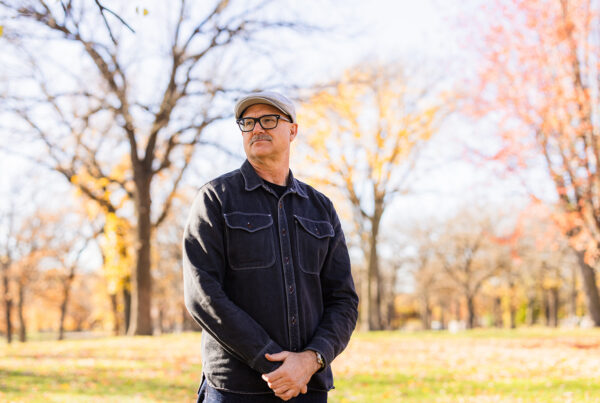In state legislatures across the country, we have seen lawmakers claim, without evidence, that bail reform is responsible for rising rates of crime. They’ve been parroting what they’re seeing or hearing on far-from-neutral cable news channels or in headlines in tabloid papers from New York, California or Illinois, where they run near-constant reporting that is loosely tied to facts or reality about “how bad bail is.”
The anti-bail reform headlines and reports pushed out by “big media” are numerous, driven by an agenda that, if we’re being cynical (and we should be), stokes fear and hatred in the interest of creating a sensational non-stop news cycle that keeps people tuned in. Fear and hatred, which speaks to the base impulses and instincts of many people, sustains attention because it triggers our core needs for safety and security – elements of a healthy lifestyle that we all want and deserve. Ironically, what these bad faith journalists call “reporting” generously amounts to little more than fear mongering. Worse still, bad reporting like what I’m describing here only perpetuates the prevalence of harmful practices and policies, like the overuse of pretrial detention and incarceration, because it prioritizes clicks over care.
Stoking mass panic and fear is one way to create a loyal viewer base but it’s not a good way to develop policy or run our states and country. That’s because, for one, this sensational reporting style relies on catchy, scary headlines that are not representative of the situation as a whole. Rather than telling some “boring” story about how a recent, rigorous evaluation of New York’s bail law found that the state’s reform “reduced recidivism in New York City,” problematic reporters opt to describe one-off crimes that are often horrible, but also statistically very rare. Instead of telling the stories of people who were safely released pretrial, like one of the thousands The Bail Project has helped, reporters plaster mugshots of Black and brown men and describe in gory detail unusual and infrequent crimes. These reporters also offer the limited one-sided perspective of someone who likely has an agenda, often a police chief, a member of the fraternal order of police or a lobbyist for the for-profit bail bonds industry who offers a blanket unsubstantiated claim that bail is driving crime, without interviewing academics, advocates, and public defenders for differing perspectives. The media gives the impression that law enforcement is united in opposing bail reform whenever stories are told in this unbalanced way. This isn’t the truth, however: former police chiefs, jail administrators, prosecutors, current law enforcement, and ex-bondsmen have all come out in support of bail reform.
The poor quality of our reporting is happening amidst the incredible fragmentation created by social media and its numerous armchair experts and alongside massive staffing reductions in local newsrooms. As everyone who has worked an office job knows, when you’re short-staffed, the quality of the work overall suffers. Additionally, reporters and researchers encounter tremendous obstacles in their ability to access high-quality data because the data collected in our county and state courts is wholly inadequate, with some courts still operating on antiquated DOS operating systems. Taken together, even the “good” reporters don’t have a chance to produce high-quality in-depth pieces, even if they wanted to.
A healthy democracy requires a well-informed populace. Part of why The Bail Project exists is not only because we believe that everyone deserves a fair chance at pretrial freedom and because we have a model that proves that people can be safely released, but also because we want to help inform the public and shift us away from harmful narratives. Our work is in service of that democratic ideal.
So, since you may be hard-pressed to find the kind of factually accurate reporting that you need here, I’m going to take a minute to summarize at a really high-level, the most rigorous studies (meaning, conducted by academics, not fear-mongering journalists) and what they show about bail and crime. Go tell your friends:
- A recently released report from the John Jay Data Collaborative for Justice looked at the New York bail law and found that “eliminating bail for most misdemeanors and nonviolent felonies reduced recidivism in New York City, while there was no clear effect in either direction for cases remaining bail eligible.”
- Researchers that looked at the impact of a change to court rules in Chicago that minimized the use of cash bail found that the rule change “was not associated with any significant change in new criminal activity, violent or otherwise, and was not associated with any change in the amount of crime in Chicago during the post-rule change observation period.
- Federally-appointed monitors in Harris County (Houston), Texas have consistently found that bail reforms there have “produced no increase in the new offenses by persons arrested for misdemeanors” and that there has been no change since the bail reforms in the number of people who are rearrested for new charges after arrest has declined.
- Researchers with the Harry Frank Guggenheim Foundation examined almost every place where bail reforms have taken place and found “no clear or obvious pattern” connecting bail reforms and violent crime.
In order to get away from this nefarious, toxic political culture, driven by an equally toxic and political media culture, we need to ground ourselves in facts and practical evidence so that we can together make smart, practical solutions about what we need to create the safe, thriving communities Americans want and deserve. We can do it. The truth is out there.
Thank you for your valuable attention. The urgency and complication of the cash bail crisis requires meaningful participation to create real change – change that is only achieved through the support of readers like you. Please consider sharing this piece with your networks and donating what you can today to sustain our vital work.












